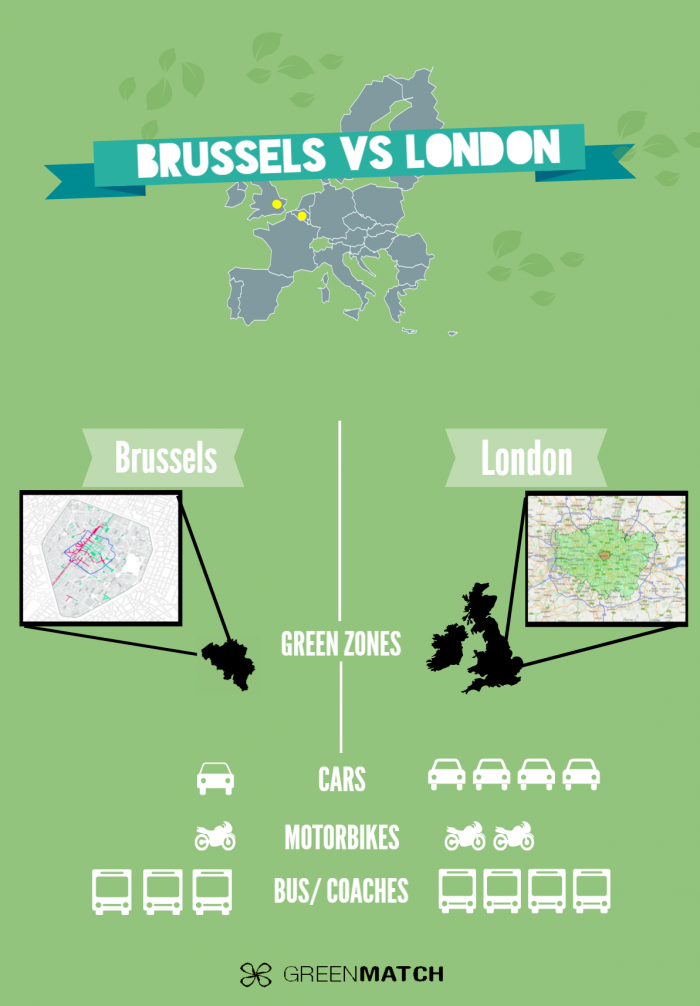
Yesterday, the municipality of Brussels officially launched its new pedestrian area in the hyper city centre.
While you could already enjoy the Grand Place and the streets in its surrounding without being annoyed by cars, you can now savour a walk after the Beurs (Old Stock Exchange) and its boulevard.
This new project, extending Brussels area from 35 hectares to 50 hectares, means that Brussels will have the biggest car-free zone in Europe after Venice.
This measure was adopted to tackle the high pollution the city is suffering from, mostly due to carbon dioxide emissions from vehicles. The mayor of the metropolis, Yvan Mayeur, says that this project will be hard to implement and that it could take up to 2 years before the traffic gets stabilized.
Indeed, the boulevard in front of the Beurs is highly used by Brussels citizens to commute from one part of the city to the other, mainly for job purposes.
To counter the negative effects of this project, such as people not being able to go to work by car, the municipality will establish a free electric train inside the pedestrian area and the bus lines trajectory will be changed to better fit citizens’ transportation needs. Moreover,
Brussels’ Capital will also build five new underground parking areas for a total capacity of 1,600 cars.
However even if this project sounds promising, it is highly criticized by Brussels’ citizens as they say the traffic congestion will only shift to other parts of the city and no improvements will be visible.
London, which is the largest capital of the European Union, needs to catch up with its Belgian neighbour and show that the city can be not only economically competitive, but also environmentally wise.
One of the main projects that the council undertook was the implementation of the Low Emission Zone (LEZ) in 2008 and progressively tighter regulations until 2012.
A new regulation phase started in 2015, concerning city buses, however without affecting diesel Lorries nor diesel coaches. The city buses were notably equipped with a Selective Catalyst Reduction System (SCRS) to reduce NO2 emissions.
In March 2015, the city council announced the project of creating an Ultra-Low Emission Zone (ULEZ) that should be effective by September 2020. This new zone concerns the hyper city centre of London, which is currently the area of the Congestion Charge Zone (CCZ).
This new zone will be created in order to reduce the air pollution in the city centre, mostly for health purposes. High standards will be required to cars, motorcycles, vans, minibuses, coaches and HGVs inside this zone. Otherwise, the owner of the vehicle will have to pay £12.5 per day or £100 per day if it is a coach, a bus or HGVs.
Get informed about the new ULEZ standards by visiting the website Transport for London where you can find tables summarizing the different requirements you need to meet according to the type of vehicle.
~
Sources and Statistics cited:
1. Bruxelles: http://bit.ly/1Cg8Tfw
2. Department of energy and climate change:https://www.gov.uk/ search?q=london+car+pollution
3. Low emissions zones taxes: https://www.gov.uk/low- emission-zones
4. Calculate vehicule tax rate: https://www.gov.uk/calculate- vehicle-tax-rates
5. Table showing the vehicule tax rate according to engine size, fuel type and emission of CO2 + registration before or after 2001: https://www.gov.uk/vehicle- tax-rate-tables
6. Ultra Low gas emission zone, http://bit.ly/1NCwKpY
7. London’s future projects concerning transportation, http://bit.ly/1NCwJSR
8. Brussels Beursplein car free, http://bit.ly/1Cg8KZn
9. Map Brussels: surface, http://bit.ly/1LNbZuk
10. Map London: surface, http://bit.ly/1LNckx3
~
Relephant Read:
Breaking News: Paris Takes a Serious Stand Against Climate Change.
~
Author: Alexia Izaute
Editor: Renee Jahnke
Infographic: Courtesy of Author











Read 0 comments and reply